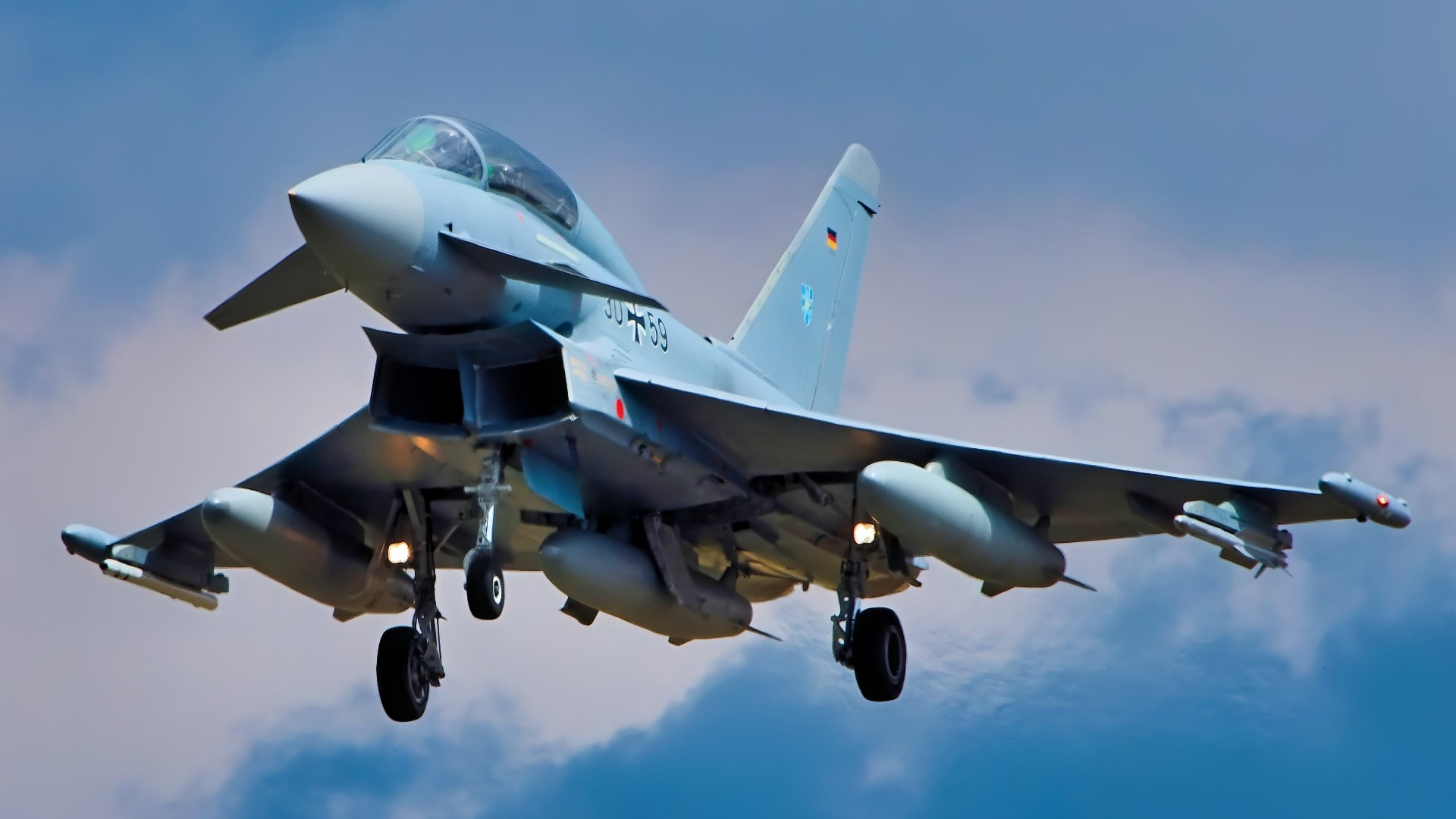Key Points and Summary – Germany has approved a €3.75 billion purchase of 20 new Tranche 5 Eurofighter Typhoons, set for delivery in the 2030s.
-These jets, featuring advanced E-scan radars and electronic warfare suites, will replace Germany’s aging Tornado fleet.
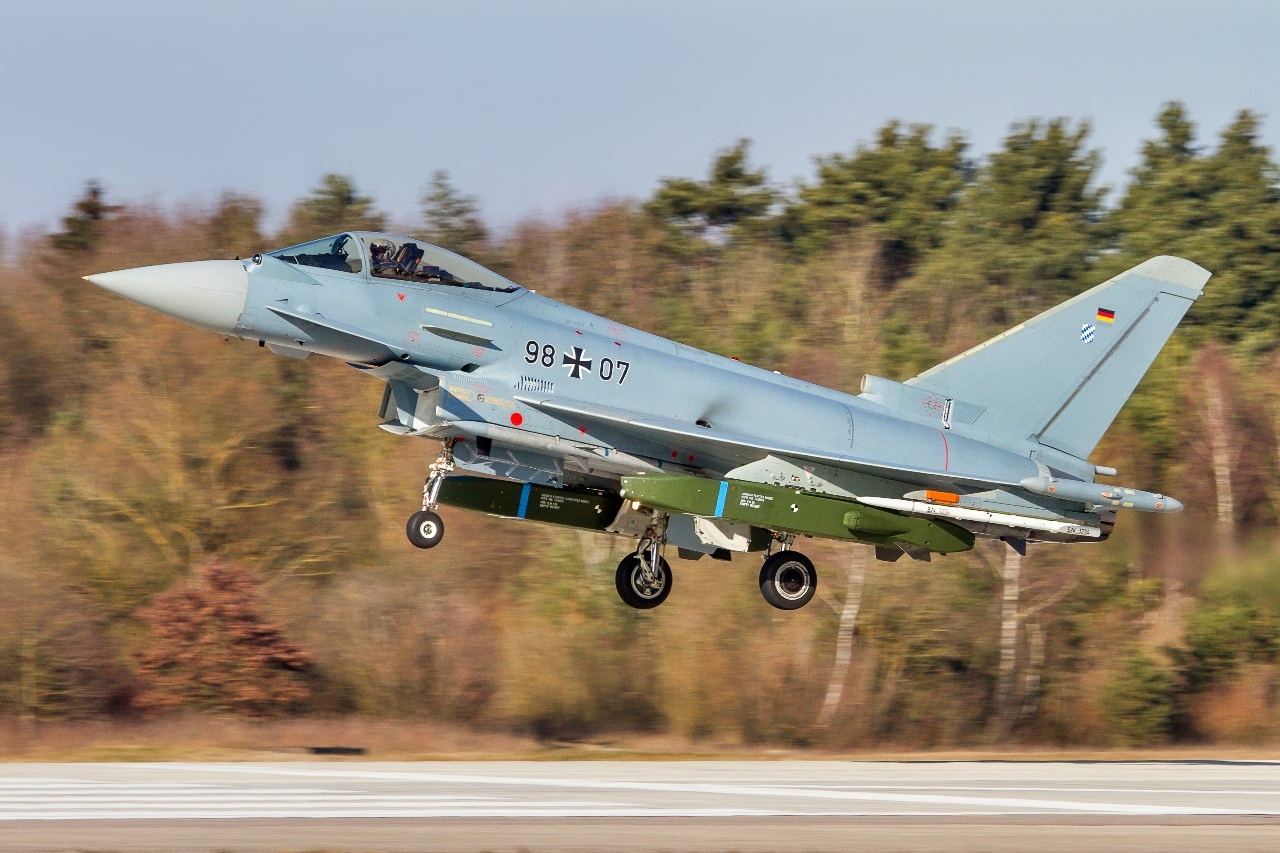
Taurus Missile on Eurofighter. Image Credit: Creative Commons.
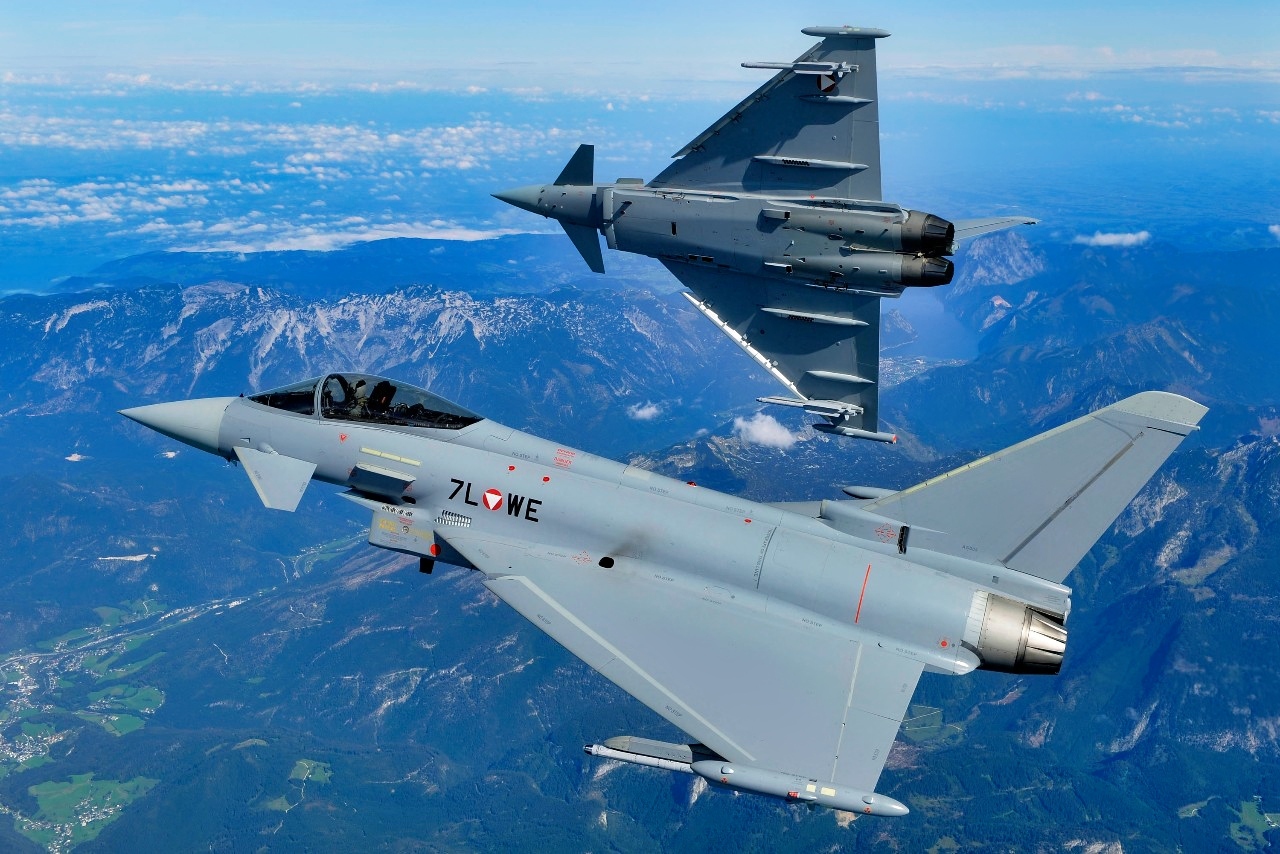
Eurofighter Typhoon. Image Credit: Creative Commons.
-The decision solidifies the Typhoon’s role as a vital “bridge” to Europe’s next-generation fighter, a future that is increasingly uncertain.
-The Future Combat Air System (FCAS) program is reportedly on the verge of collapse due to “industrial bickering” between France’s Dassault and Airbus, with German Chancellor Friedrich Merz recently warning that the project is not making progress.
Germany Has Purchased 20 New Eurofighter Typhoons
The German government has approved a €3.75 billion ($4.36 billion) purchase of 20 new Tranche 5 Eurofighter Typhoon jets, Breaking Defense reported. The fighters will come equipped with E-scan radars and are set for delivery throughout the first half of the 2030s.
“The Eurofighter is the mainstay of the German combat aircraft fleet,” the German Ministry of Defense said in a statement, according to Breaking Defense. “The procurement of Tranche 5 serves to gradually transfer the capabilities of the aging Tornado fighter jet in the area of Electronic Combat and Reconnaissance into a future-proof platform.”
The purchase will also allow Germany to continue meeting its NATO obligations on defense spending, the statement emphasized.
The Eurofighter purchase is the most expensive of seven weapon system acquisitions approved by the budget committee. Other approvals, according to Breaking Defense, include “estimated funding of €412 for Eurofighter simulators to support pilot training,” as well as a “project to upgrade the electronic warfare capabilities of Germany’s Typhoon fleet” at a cost of €1.13 billion.
“The Eurofighter is to be optimized with the [Saab produced] AREXIS self-protection system and corresponding air-to-ground guided missiles and further enabled for electronic warfare,” the German Ministry of Defense added.
Germany had already announced that it planned to place the order after a November 2020 purchase of 38 Eurofighter aircraft under the project name “Quadriga.”
Airbus Weighs In
Airbus touted the Germans’ approval of the purchase, announcing in a statement that the aircraft would be produced at Airbus’ final assembly line in Manching, near Munich, with the first delivery set for 2031.
“This new order is further proof of the Eurofighter’s importance to the German Air Force and the strategic role it plays in our country’s air defence and NATO capabilities,” Mike Schoellhorn, CEO of Airbus Defence and Space, said in the company’s statement on Wednesday. “The continued evolution of the Eurofighter serves as an essential technological and operational bridge to a Future Combat Air System (FCAS), ensuring a seamless transition to the next generation of air power.”
Airbus praised the Eurofighter program not only as a guarantee of effective NATO defense, but also as “a driver of growth and employment,” securing 100,000 jobs throughout Europe—a quarter of them in Germany alone.
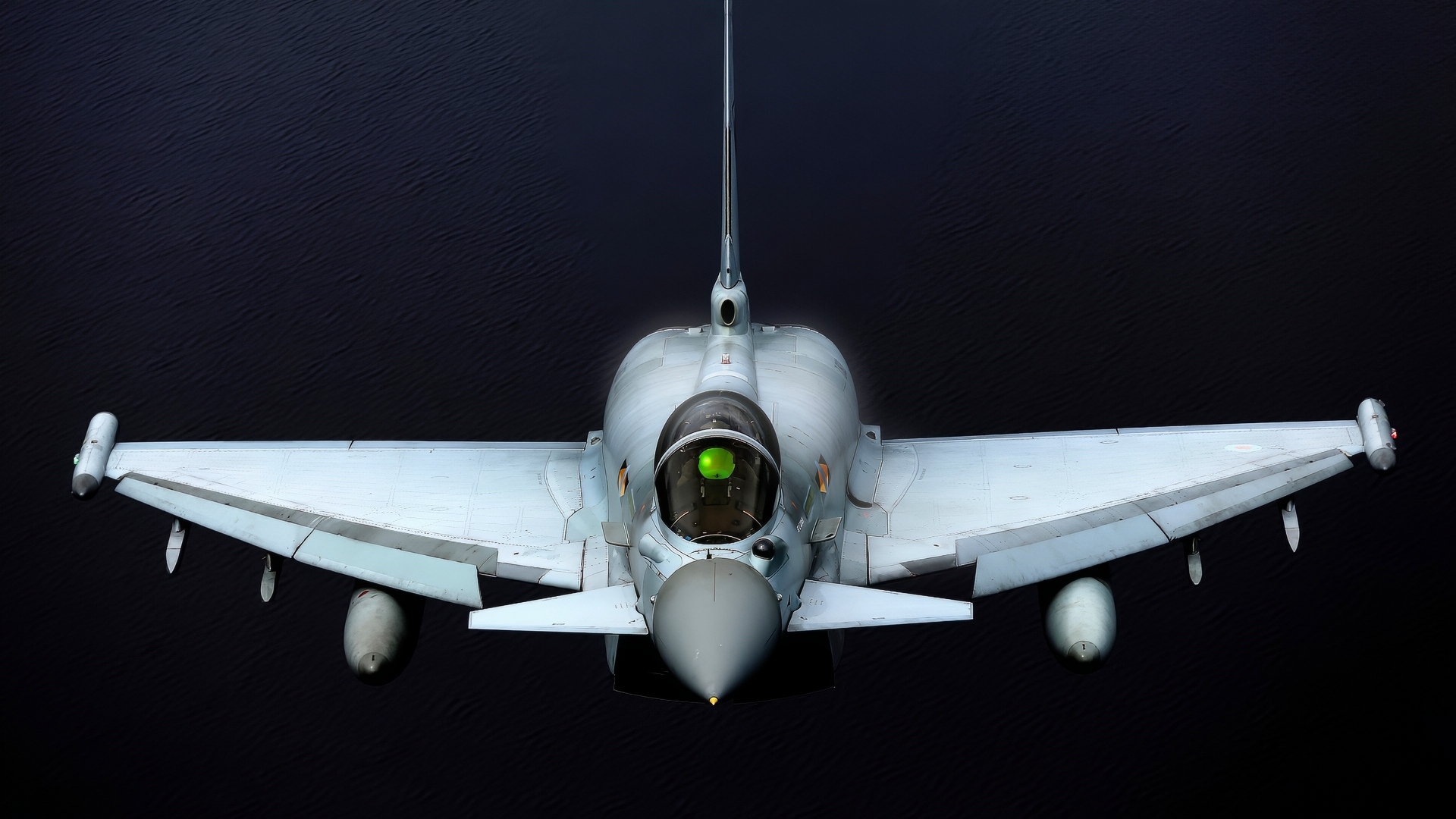
Eurofighter Typhoon over the Water. Image Credit: Creative Commons.
Speaking of NATO, TVP World reported earlier this week that Germany will deploy Eurofighter aircraft to Northern Poland amid continuing tensions with Russia.
German Defense Minister Boris Pistorius said at this week’s NATO meeting that Germany would be conducting patrol flights as part of NATO’s Eastern Sentry operation. This follows recent incursions of Russian drones into NATO airspace.
The Germans, Pistorius said, will be “even more active and even more present and visible” on the Eastern flank.
In addition, per TVP World, a German Defense Ministry spokesperson said that two Eurofighters will be “stationed in Malbork from December 2025 till March 2026,” after such jets were stationed in Poland in August and September.
About the Eurofighter Program
The Eurofighter Typhoon program, according to its website, “brings together the brightest minds in European aerospace to provide a world class weapon system and maintain European security and sovereignty.”
The program is a venture of Airbus, BAE Systems, and Leonardo, and brings together Britain, Germany, Spain, and Italy. The United Kingdom and Germany each claim 33 percent ownership of the venture, with Italy owning 21 percent and Spain owning 13 percent.
What of the FCAS?
The Eurofighter is planned to remain in service with the German Air Force through the 2060s. The Future Combat Air System (FCAS) is expected to become operational around 2040, at which point the Eurofighter “will also operate networked with current and future crewed and uncrewed aircraft – and continue to help pilots fulfil their missions.”
However, there are doubts about the viability of the FCAS program’s promise to deliver sixth-generation fighter jets bolstered by a new digital infrastructure called the “combat cloud.” The project was first conceived in 2017.
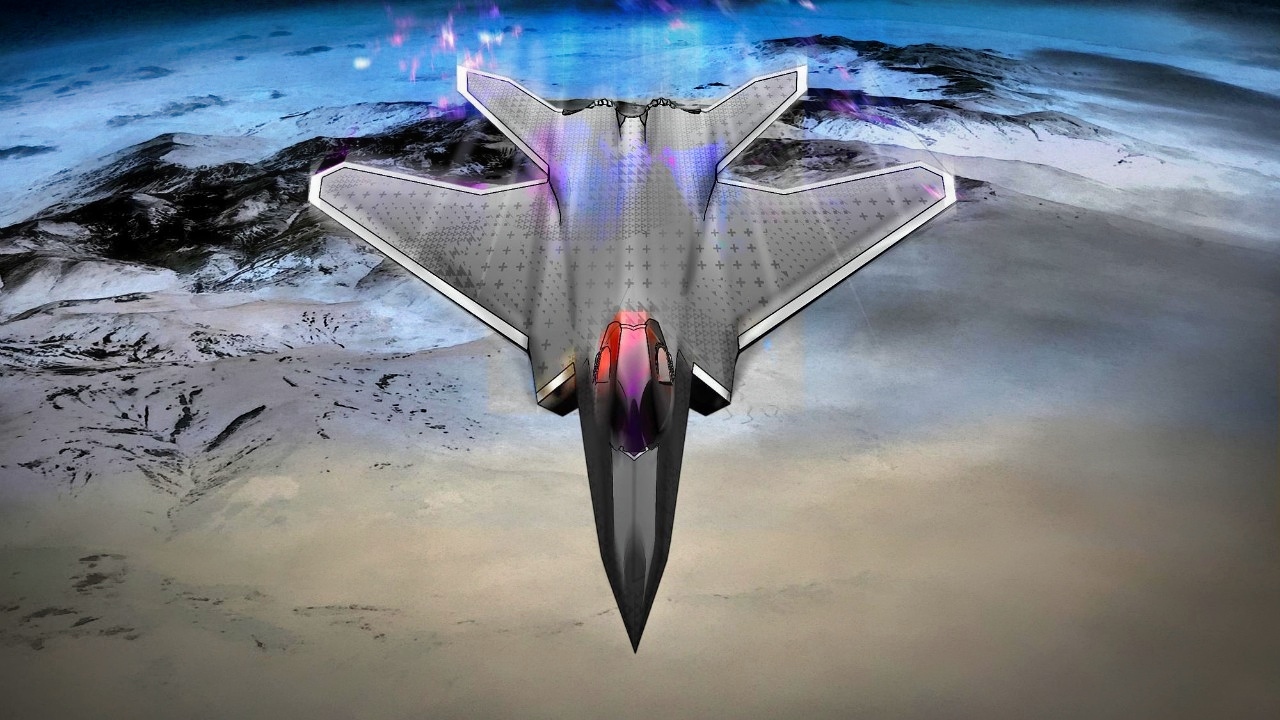
FCAS Fighter from Dassault. Image Credit: Dassault.

FCAS Fighter Mock Up. Image Credit: Creative Commons.
The Economist reported this week that FCAS, described as Europe’s biggest military project, could collapse
“We are not making any progress with this project,” German Chancellor Friedrich Merz said of the FCAS, according to the report. “Things cannot continue as they are.”
The Economist believes that “industrial bickering is putting it all at risk.” To start, French aerospace company Dassault has complained about bureaucracy holding back the project.
“I will not accept three people sitting around a table deciding on all the technical aspects required to fly a high-performance aircraft,” Dassault’s CEO Eric Trappier said last week, The Economist reported. “Give us the ability to manage this program.”
Airbus, meanwhile, does not want to play a “subordinate role” in the project.
France views the project with urgency, since it “needs a new jet by 2040 to replace the Rafale fighters;” but Germany has been adding American F-35s, meaning it has less pressing need for a new platform.
One German lawmaker has warned that Germany could walk away from the project if Dassault doesn’t give ground, the Economist report said—and a recent French-German Cabinet meeting failed to get things on track.
The War Zone reported in September that if Germany walks away from FCAS, it could instead team up with the UK or Sweden.
“We share the assessment that the current situation is unsatisfactory. We are not advancing with this project,” Merz said last month after discussions about FCAS with Spanish Prime Minister Pedro Sánchez, Politico reported. “We are both speaking with the French government, and we want a solution as soon as possible.”
Politico added that the sides could agree to keep up the current division of work while “tweaking the governance to allow for faster decisions.”
About the Author: Stephen Silver
Stephen Silver is an award-winning journalist, essayist, and film critic, and contributor to the Philadelphia Inquirer, the Jewish Telegraphic Agency, Broad Street Review, and Splice Today. The co-founder of the Philadelphia Film Critics Circle, Stephen lives in suburban Philadelphia with his wife and two sons. For over a decade, Stephen has authored thousands of articles that focus on politics, national security, technology, and the economy. Follow him on X (formerly Twitter) at @StephenSilver, and subscribe to his Substack newsletter.
More Military
Russia’s T-14 Armata Super Tank Mistake Still Stings
SR-72 Darkstar: The Mach 6 Mothership for the F-35 and F-47
China’s J-20 Mighty Dragon Fighter Can Be Summed Up In Just 4 Simple Words
The MBT-70 Tank Still Haunts the U.S. Army
Russia’s ‘New’ MiG-35 Fighter Is Officially ‘Circling the Drain’


